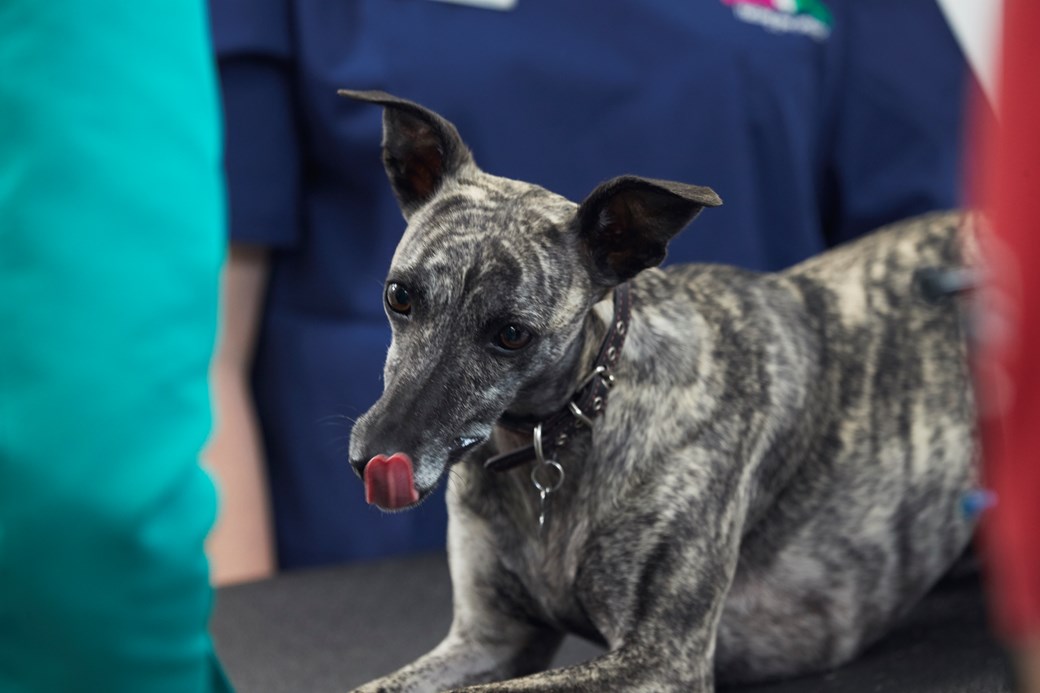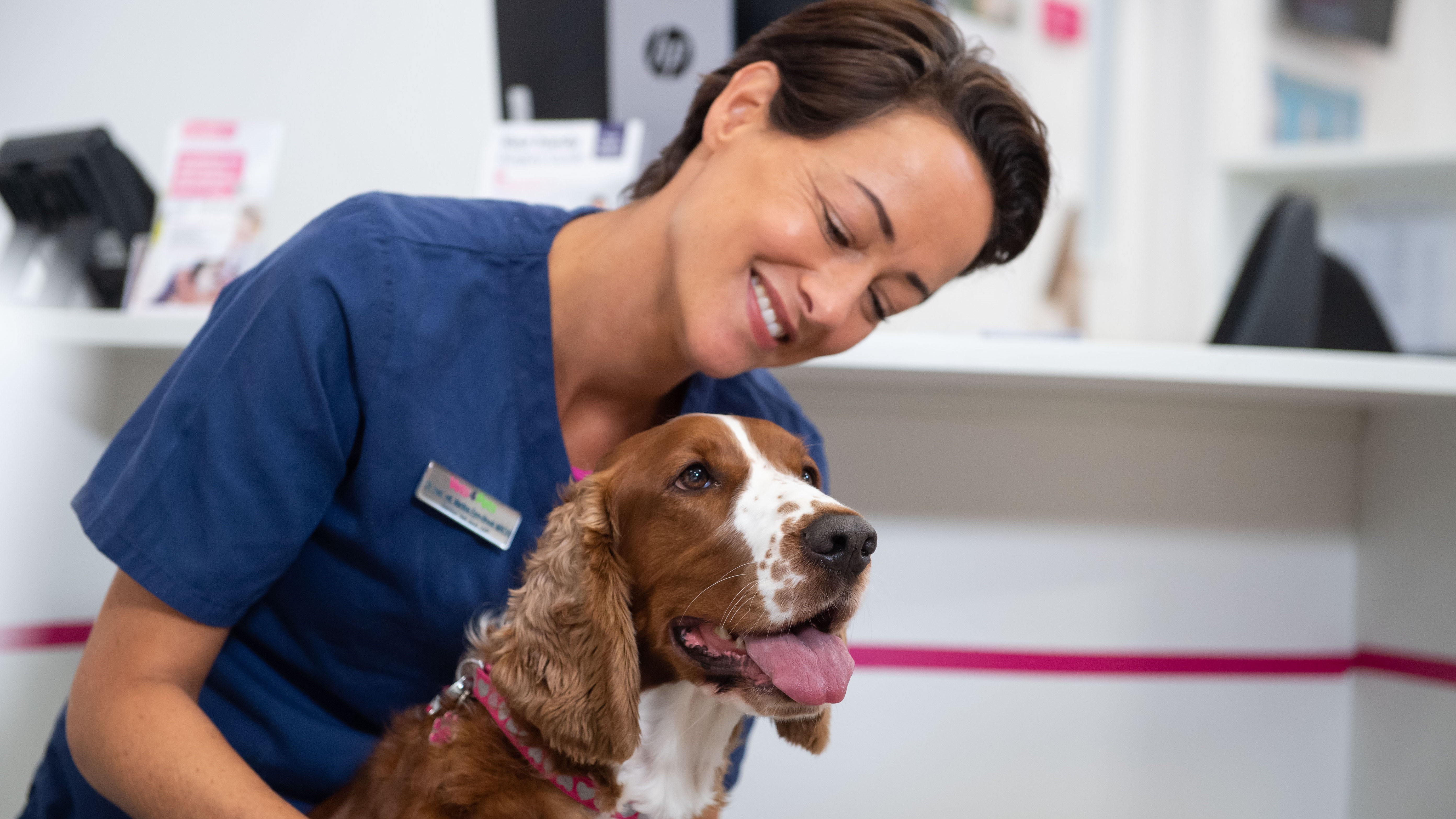
Cataracts in dogs
How do you spot a cataract developing in your dog’s eye, what should you do if you think your dog may be getting a cataract and how are cataracts in dogs treated?
Cataracts are a leading cause of blindness and sight reduction in dogs. Many animals, including humans, can develop cataracts in their eyes.
Cataracts can lead to serious and painful complications, but the good news is that treatment is usually successful, especially if carried out early so if you think your dog could have cataracts, ask your vet to take a look.
What are cataracts?
If your dog’s eye looks cloudy or white where there’s normally a black pupil, they could have a cataract.
Light passes into the eye through the lens, which is a squidgy, disc-shaped structure behind the pupil. A healthy lens is clear so you can’t normally see it.
When something happens to the eye, and the jelly-like filling in the lens changes for some reason, it can become cloudy or white. Light can no longer pass through the lens and the sight in that eye is decreased or even lost.
What are the symptoms of cataracts in dogs?
You may not see any signs of early-stage cataracts in your dog and they will generally only be apparent if your vet examines your dog’s eyes closely. If your dog’s cataracts are more developed, you may see faint, whitish shapes in your dog’s pupils. Once cataracts are established, your dog’s pupils will no longer look black but instead appear anything from milky to solid white.  Once your dog’s cataracts cover more than 60% of their combined lenses, your dog might begin to show signs of loss of vision. Bumping into things or misjudging where objects are could be the first signs of cataracts.
Once your dog’s cataracts cover more than 60% of their combined lenses, your dog might begin to show signs of loss of vision. Bumping into things or misjudging where objects are could be the first signs of cataracts.
Sometimes, other parts of the eye can look cloudy, for example, the cornea or the anterior chamber (at the front of the eye). The reasons for cloudiness in these areas are different from cataracts, so it’s important that your dog is seen by a vet as soon as possible.
Some types of cataracts can cause pain and inflammation in the eye. Pain, redness, excessive blinking and rubbing the eyes are all signs that your dog should be examined by their vet.
What is the treatment for cataracts in dogs?
There are currently no medical treatments to treat cataracts.
However, a surgical technique called phacoemulsification is used routinely and very successfully in animals and humans. This procedure removes the cloudiness and restores sight to the affected eye. It is a very specialised operation, and your own vet will usually refer your dog to a veterinary ophthalmologist with the skills and equipment to perform it.
Not all dogs are good candidates for cataract surgery so, before it is recommended, your dog will need to have some further tests to make sure there are no other problems that could affect the outcome. In dogs, the procedure is performed under general anaesthesia and this will be discussed with you.
Treatment for cataracts in dogs
In specialist eye centres the procedure is performed very regularly and has around a 90% success rate. Cataracts treated early, and with no or few other eye problems, the better the outcome.
Your veterinary ophthalmologist will send your dog home wearing an Elizabethan collar to protect their eyes from being rubbed or bumped. It’s essential this stays in place until you’re asked to remove it, usually after about two weeks, although you might have to help your dog eat and drink whilst they are wearing it.
You’ll also be asked to administer medications, both directly into the eyes and by mouth. These will help to control pain and inflammation, and reduce the chances of infection.
Your ophthalmologist will advise you what type of exercise your dog can have, and when. Too much, too soon might damage their eyes following surgery. As pulling on a neck collar can increase the pressure in both eyes, a well-fitting harness, with a ‘Y’-shaped front, is a good investment because they don’t squeeze the neck.
Most dogs can see again following surgery, provided there have been no serious complications, and their vision will continue to improve over time. You might notice a little discharge and redness for a few days following surgery, and your dog might seem to dislike bright lights, but this is usually quite normal.
If your dog has other medical conditions or eye problems that reduce the likely success of the procedure, your vet may advise against cataract surgery, and these dogs may require ongoing medical treatment. For example, dogs at risk of glaucoma (a build-up of pressure within the eye) may be prescribed eye drops to prevent or delay the onset of the glaucoma.
Dogs with cataracts can still lead very good lives, even if they have lost their sight. A few adaptations may be needed to keep them safe, such as using a lead when they’re in the garden, and not moving the furniture around, but dogs can adapt well to sightlessness.
Can you prevent cataracts in dogs?
You can’t prevent cataracts if your dog has inherited them, although not all dogs with the genetic mutations for cataracts will develop them. Keeping a close watch on your dog’s eyes means you can act early if you do see anything suspicious.
Monitoring your dog’s general health and wellbeing can also mean that you can identify signs of conditions such as diabetes early. The first symptoms you might notice are drinking and urinating more than usual and seeming more hungry than normal but losing weight.
FAQ's on cataracts in dogs
Cataracts in dogs can have many different causes. Most cataracts are inherited: studies have identified at least 100 dog breeds that carry genetic mutations giving them a higher risk of cataracts. These include, but are not limited to:
- Australian shepherds
- Boston terriers
- Staffordshire bull terriers
- French bulldogs
- American cocker spaniels
- Welsh springer spaniels
- Labrador retrievers
- Miniature & standard poodles
Dogs affected by hereditary cataracts should not be bred from. This is to prevent the condition passing to the next generation.
Another common cause of cataracts in dogs is diabetes mellitus. These cataracts are sometimes the reason a dog is taken to see their vet and to then be diagnosed with diabetes. Within a year of diagnosis of diabetes mellitus, around three-quarters of diabetic dogs will develop cataracts.
Other causes of cataracts in dogs include traumatic eye injuries, and diseases affecting other parts of the eye, such as the retina.
The effect on a dog’s vision depends upon how much of their lens (or lenses if both eyes are involved) is affected. If only one eye is affected, or if less than 30% of both lenses are affected by cataracts, your dog should still be able to see well. If cataracts affect 60% or more of the combined lenses, it will affect your dog’s sight, and if 100% of a lens is affected, there will be no sight in that eye.
Not all cataracts progress to the point where the entire lens is affected, and if a dog’s cataracts develop gradually, they can usually adapt to diminishing sight. Because it can happen slowly, it’s not unusual to not realise a dog is going blind! Once a cataract is mature (i.e. it blocks all the light from getting through the lens to the retina) the dog might begin to bump into things. However, they soon learn how to get around without their sight.
When a veterinary ophthalmologist examines an eye they may be able to tell whether a cataract is likely to progress, but a lot depends on the cause.
If you’re concerned that your dog has cloudy eyes, make an appointment with your vet to find out what’s going on. Your vet will use a bright light and a special lens to look closely at your dog’s lenses to determine whether a cataract is forming.
Your vet will also examine the other parts of your dog’s eyes and, depending upon their findings, they may recommend further tests. Sometimes, medical conditions that cause cataracts may also need investigating.
Although cataracts are more common in older dogs, they can also develop sclerotic lenses. This is when the lens changes from soft to tough, and thickened, and they can look like cataracts.
A dog with this condition (nuclear sclerosis) can usually still see, although not as well as before. Ask your vet to take a look at your dog’s eyes if you see any changes in their appearance so that potential problems can be investigated and treated as soon as possible.
Health Plans to keep your dog healthy
At Vets4Pets we offer a range of Health Plans that make essential routine treatments more affordable. You'll save money on things like annual vaccinations, flea and worm treatment and routine health check-ups.

Dog Advice
Read more of our expert dog advice to keep your dog happy and healthy.
